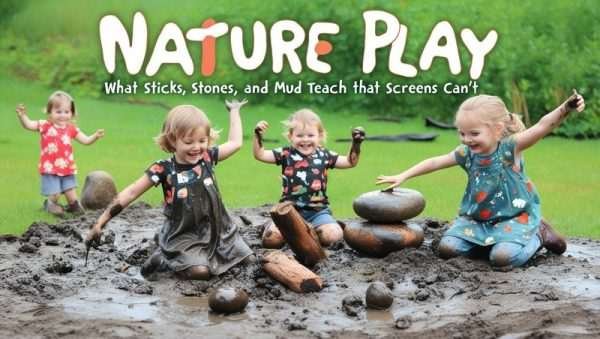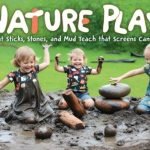
By Dr. Lucy Harper, Child Psychologist
You might remember a few month’s ago we had an article called “Why Do Your Kids Play with the Box? An Interview with Child Psychologist Dr. Lucy Harper” where I shared a discussion with Dr Lucy. Well, she has agreed to write some very interesting articles for us.
Last weekend, I watched a little boy in a park chase a leaf that was blowing in the wind. No toys, no screens, just a leaf and his bare feet slapping the grass as he giggled and darted in wild zigzags. His parents watched from a picnic rug, smiling. That simple moment reminded me: this is what we often forget to prioritize in childhood—nature-based, unstructured, delightfully messy play.
We live in a world buzzing with screens, structured playdates, and high-performance expectations. But when children are outside, playing with sticks, stones, puddles, and mud pies, something amazing happens in their development—something screens simply can’t replicate.
Let’s talk about why.
Nature feeds the senses in a way screens never can
When a child crouches to inspect an ant hill, rolls a pinecone between their fingers, or squishes mud between their toes, they’re activating and refining their sensory systems. This kind of sensory-rich play helps children develop coordination, balance, and spatial awareness.
Screens, while visually stimulating, offer limited physical sensory feedback. Nature, on the other hand, invites kids to move through space, smell the air, feel textures, hear birdsong, and adapt to unpredictable conditions. It’s a full-body learning lab.
Risk-taking in nature builds confidence and resilience
Climbing a tree, balancing on a fallen log, or stepping into a cold stream—these experiences stretch a child’s boundaries in small but powerful ways. They teach kids how to assess risk, trust their instincts, and recover from a scrape or tumble.
In contrast, many digital environments are risk-free and highly controlled. Real-life challenges in nature help children build resilience and the ability to self-regulate when things don’t go exactly to plan.
Nature play encourages mindfulness and mental clarity
Nature is one of the few places where children aren’t being constantly sold to, scored, or overstimulated. It allows their busy minds to rest and wander. Watching clouds drift or lying in tall grass slows everything down. These moments of calm increase focus, reduce anxiety, and allow children to reconnect with their internal rhythms.
Many children today struggle with overstimulation, which can look like emotional outbursts, sleep issues, or trouble with focus. Nature is a soft reset for their nervous systems.
Creativity flourishes when the materials don’t come with instructions
Give a child a stick and you might see a sword, a magic wand, a paintbrush, or a fishing rod. Nature supplies the raw materials—twigs, leaves, feathers, stones—and children supply the narrative. This open-ended play fuels creativity, storytelling, and problem-solving in ways no app or structured toy can.
Nature play strengthens connection—with the earth and each other
There’s something primal and grounding about digging in the dirt or watching tadpoles wiggle in a creek. Children who play in nature tend to develop a stronger sense of empathy—not just for people, but for animals, plants, and the planet itself.
Plus, outdoor play often leads to deeper social interaction. Whether they’re building a fort together or racing down a hill, children learn to collaborate, negotiate, and share in a freer, more organic way.
So what can you do to bring more nature play into your child’s life?
-
Head to the park with no agenda—just let them explore.
-
Collect sticks, rocks, or leaves and create nature art at home.
-
Build a mud kitchen in the backyard using old kitchen items.
-
Go on a bug hunt or a cloud-spotting walk.
-
Let them dig. Let them get dirty. Let them be a little wild.
You don’t need fancy gear or faraway hikes. Sometimes, a patch of dirt and an open afternoon is all it takes.
So the next time your child says, “I’m bored,” consider skipping the tablet. Hand them a bucket, open the back door, and see what adventures unfold.
Let them get messy. Let them explore. Let them grow.
Warmly,
Dr. Lucy Harper
Child Psychologist & Advocate for Playful Childhoods















